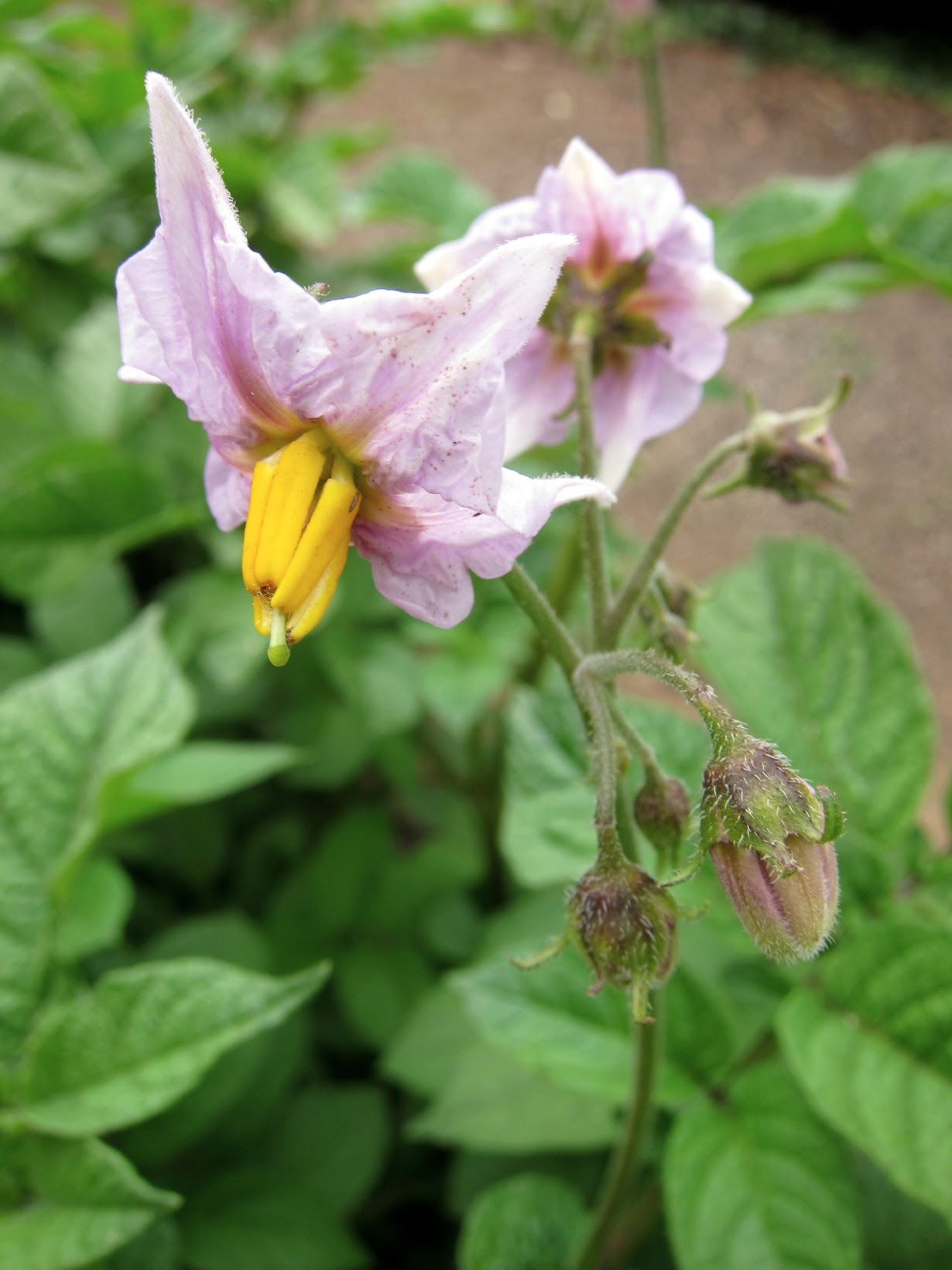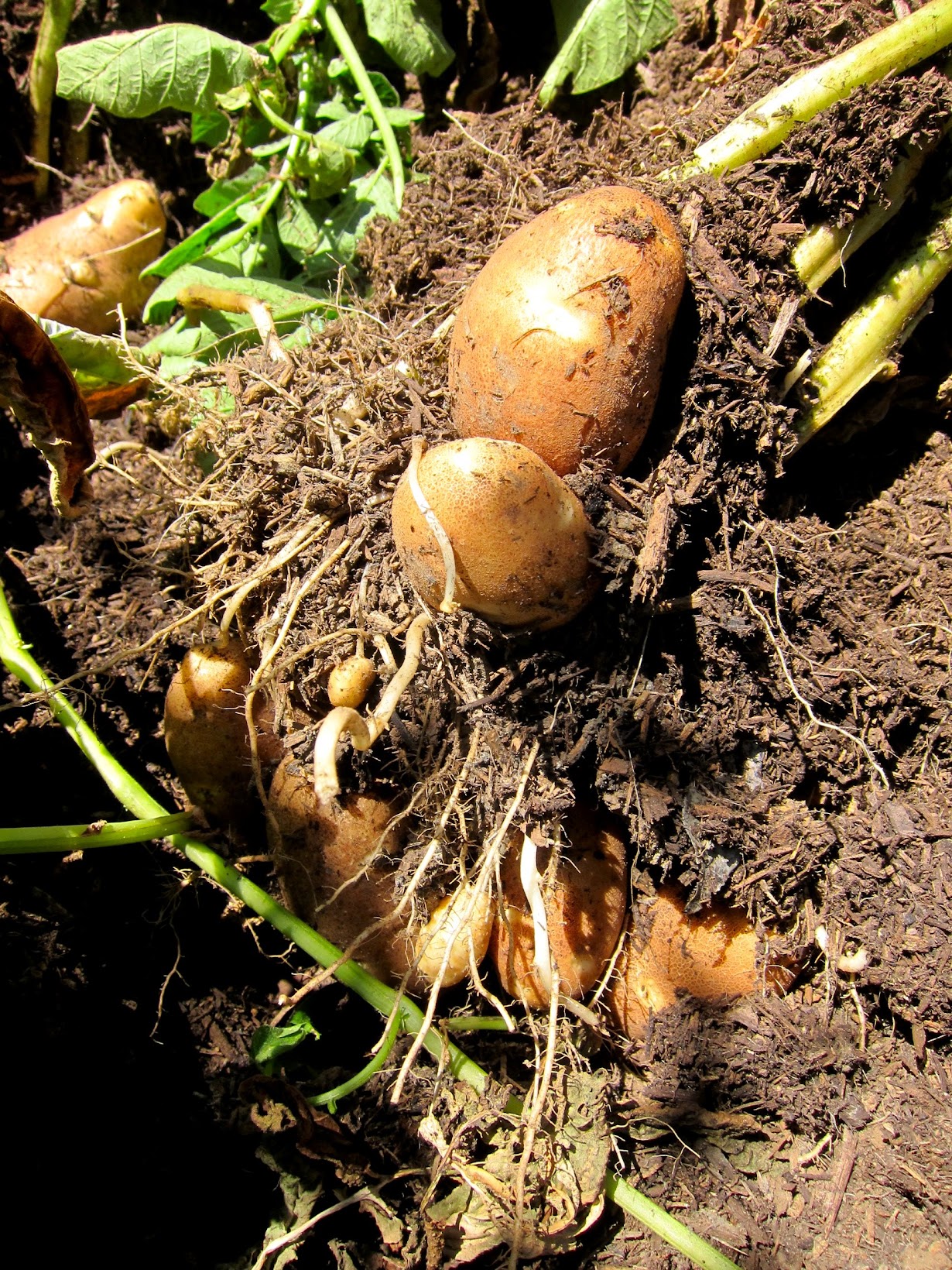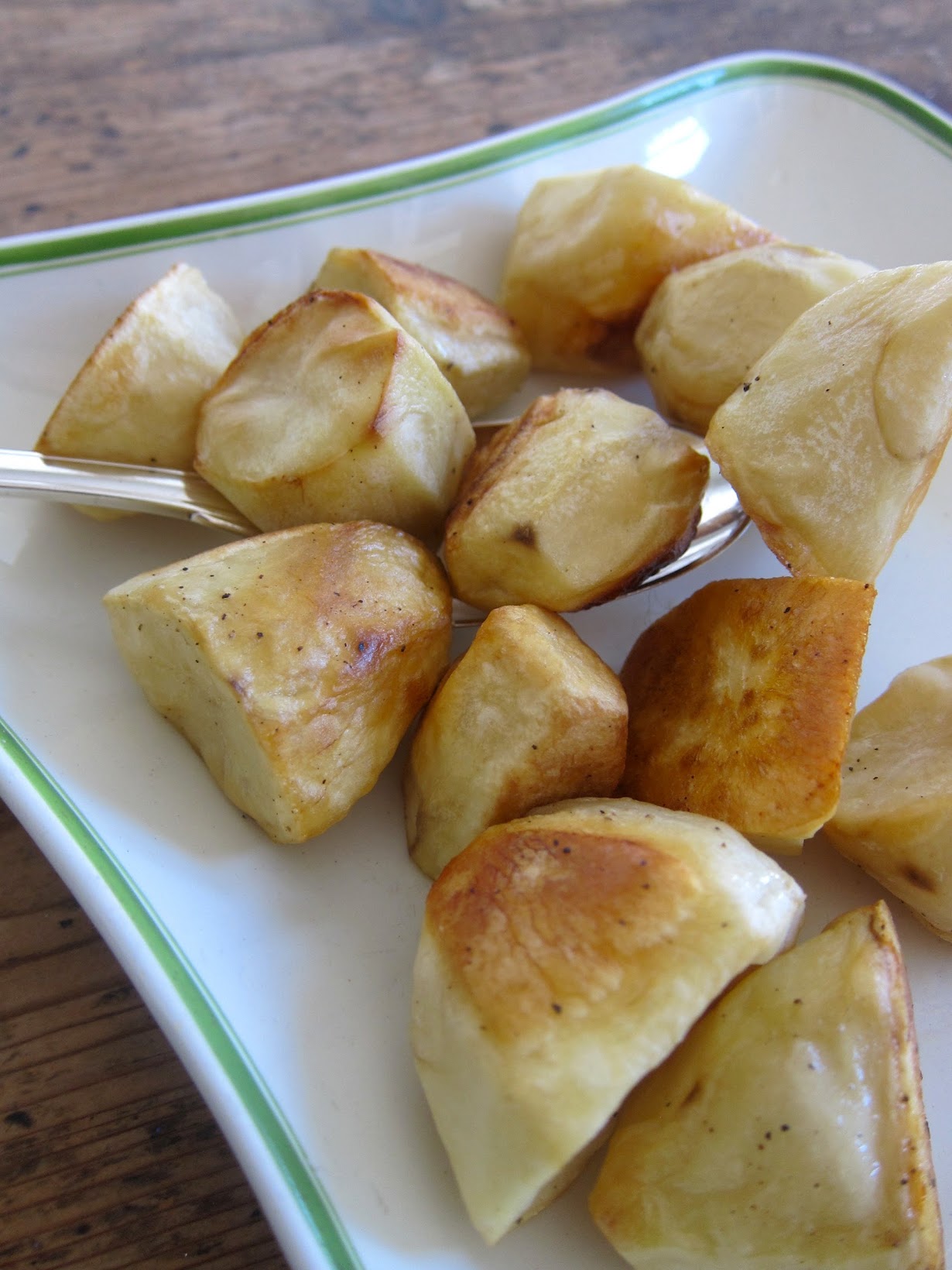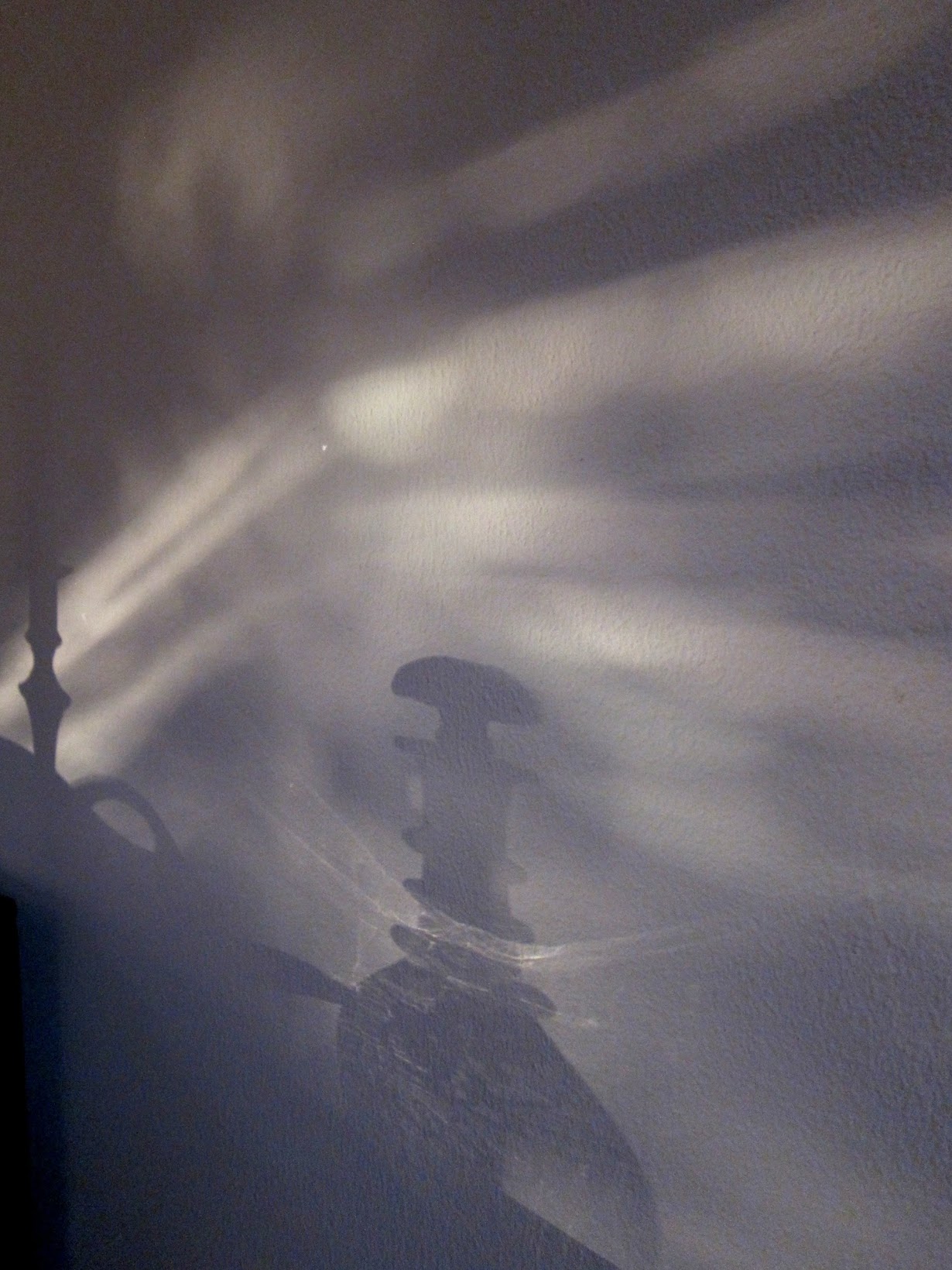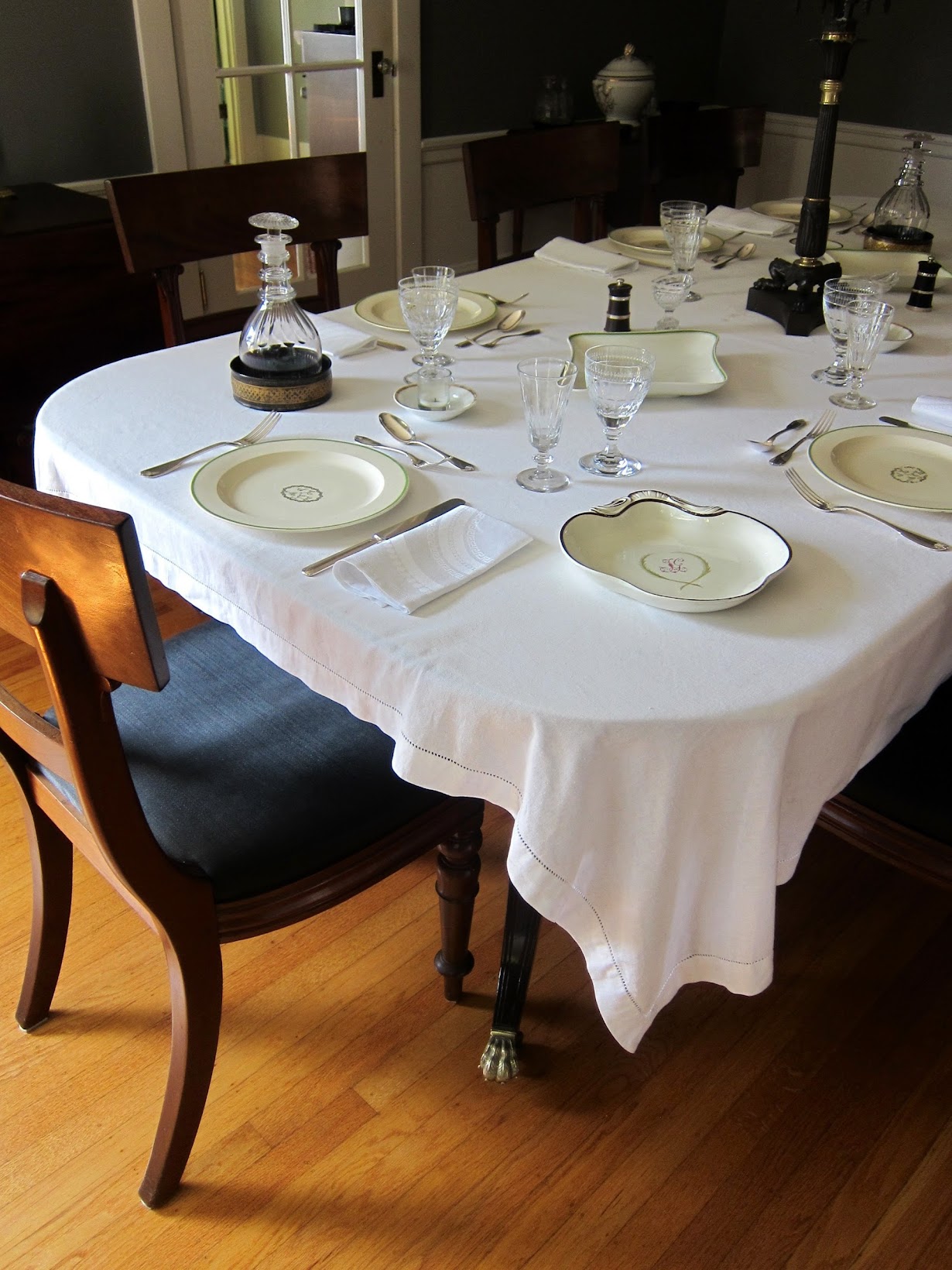Chitted potatoes ready for planting
Photo: Chronica Domus
In another life, I might have been a very contented gentlewoman farmer, or gentleman farmer's wife, as would have more likely been the case. I'd be living in an elegant country house adjoining my land, tending to the vegetables, fruits, and flowers that I've grown in abundance for my family. Always working with nature, not against. This is the only scenario I have conjured to help explain my dilettante approach to all things agrarian.
Back in the real world, I content myself with my pocket-sized garden, growing whatever takes my fancy, often on a whim. It is this approach, and a comment made by Spud, an occasional commenter on this blog, that led me to grow potatoes for the very first time this year. Spud, as you might have guessed, is a fan of the humble potato, which got me thinking why it was that I had not yet attempted to grow them myself. Like most people, I adore potatoes so as I was in the mood for a gardening adventure earlier in the spring, I decided to plant some.
Now, if I were a proper gentlewoman farmer, and my living depended on a bumper harvest, I would have sought out disease-free seed potatoes to plant. Being the practical gal that I am, however, I looked no further than my potato basket buried in my kitchen cupboard. There I found six little rosy hued potatoes and eight brown ones, all past their prime and already sprouting eyes. Knowing these were organic potatoes, I took my chances and used them for my growing experiment. The first thing I did was to place the potatoes in an old cardboard egg box, atop the kitchen table, where they remained for the next two weeks. The light and cool temperature of the room allowed the potatoes to develop their green sprouts, a process known as "chitting".
I dug a twenty-eight foot long trench and amended the soil with my secret weapon, chicken manure. It works wonders if one desires vigorous plants. On May 7, I placed the chitted potatoes two feet apart and covered them with a few inches of the rich loamy soil. Then, I waited.
This brown-skinned (russet?) potato should produce a healthy plant, and future potatoes, fingers crossed!
Photo: Chronica Domus
The little pink potato, now turned purple, is off to a good start with its cluster of sprouts
Photo: Chronica Domus
To my utter astonishment, I soon learned how rapidly these tuberous crops grow. Within a few weeks, the first leaves emerged above ground. I was more than a little chuffed with the progress and felt rather like an expectant mother does, not knowing exactly when her baby will make an appearance in the world.
Six weeks after planting
Photo: Chronica Domus
Nature is a clever lady because she enjoys color games. Upon seeing the vegetable patch, my friend Connie asked what color bloom a potato plant bears. Not having grown them before I was stumped. For those of you who are interested, here is what I found only a week or so after the photograph above was taken.
A white potato bloom resembling Mother Goose
Photo: Chronica Domus
Then, a week later, the following appeared.
Photo: Chronica Domus
Ah, I thought, there lies the answer; white blooms for brown-skinned potatoes and purple for the rosy hued variety.
The potato plants now in full bloom
Photo: Chronica Domus
As the plants grew, I was careful to pile more and more soil around their stalks so that eventually the trench I had dug was filled and hilled. Then, another surprise. What was this little green tomato-like orb?
Photo: Chronica Domus
It turned out this little fellow actually contains the seeds for next year's potatoes. I highly recommend you remove these seed pods unless, that is, you wish to have hundreds of little potato plants spring up all over your vegetable garden next season.
On July 27, almost twelve weeks since planting the chitted potatoes, it was time to dig. I could not wait to discover what lay beneath the soil. The anticipation was almost too much to bear. Would I find anything at all? If I did, would the potatoes be diseased or half eaten by earth-bound creatures?
I employed my trusty husband's strength to dig up the almost three foot tall plants, and thank goodness I did. It takes quite a bit of upper body strength to pry those little devils out of the soil. Obviously, I'm not quite ready to fulfill my gentlewoman farmer fantasy. Working down the row, my husband started with the brown potatoes, gingerly working the fork into the hilled earth so as to avoid piercing any tubers that may be lurking beneath.
Success! The first potatoes unearthed
Photo: Chronica Domus
I was jumping up and down with glee at the sight of plant after plant, full of spuds! There were large ones and small, both brown and rosy.
One potato, two potatoes, three potatoes, four ...
Photo: Chronica Domus
The mother lode
Photo: Chronica Domus
We managed to fill three bushel baskets with our harvest, an amount beyond my wildest dreams. All this from fourteen shriveled up potatoes that lay in my kitchen cupboard destined for the compost bin.
Hooray, the harvest is in!
Photo: Chronica Domus
I felt immense satisfaction and gratitude knowing my adventures in potato growing had turned out to be a smash hit. We had dug up so many potatoes that we were able to share our bounty with our friends. Arriving at their house for dinner a few weekends ago, I felt extremely proud to present dear Connie and Steven with a basket of our homegrown spuds. Oh, and I finally got to answer her question about bloom color.
To date, all of the potatoes we have sampled have been flawless - not a soft spot or diseased area to be found between them. Their flavor has surpassed all of our expectations, possessing a pronounced earthy goodness. Was it the soil conditions that played a part in our spuds' deliciousness I wonder. Mashed, boiled, or roasted, it has all been very, very good!
Our roasted potatoes formed part of last week's Sunday lunch
Photo: Chronica Domus
Photo: Chronica Domus
If you too are thinking about planting some old potatoes that are laying about in your kitchen, this is an ideal time to do so for those with gardens in the southern hemisphere. Everyone else may want to try popping a few tubers into the soil come spring.
Tell me, do you enjoy eating (or growing) potatoes and if so, what are your favorite ways of preparing them?





